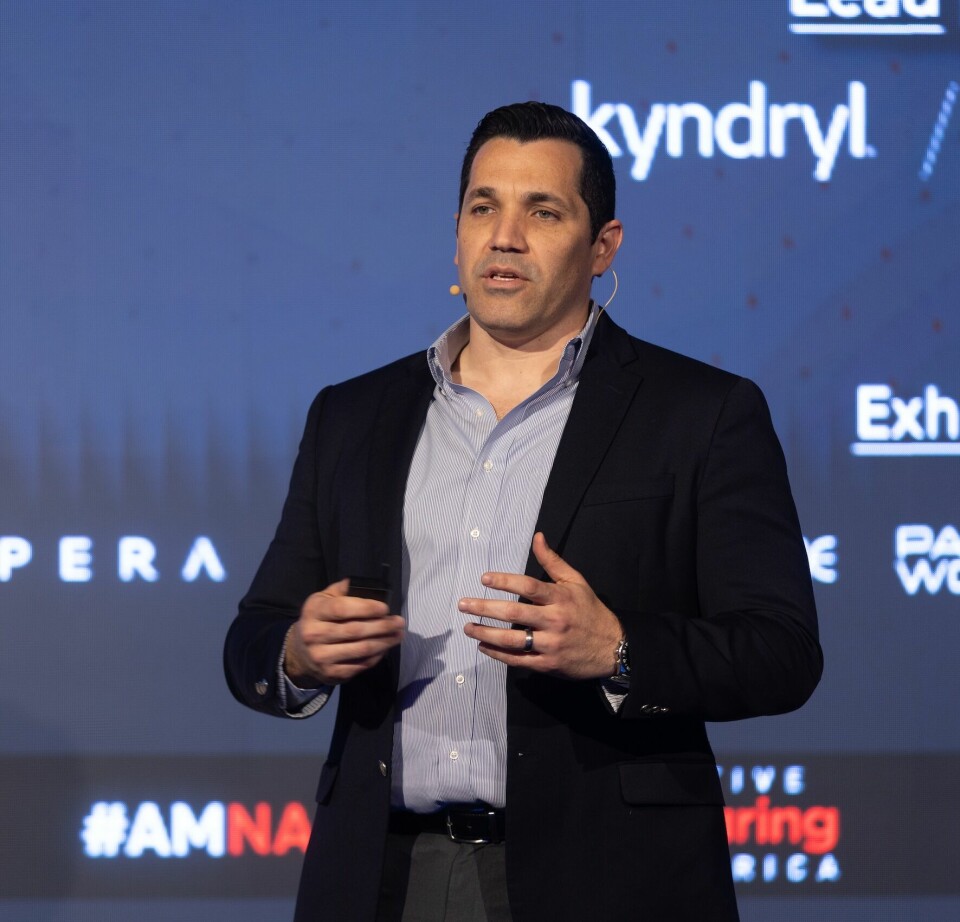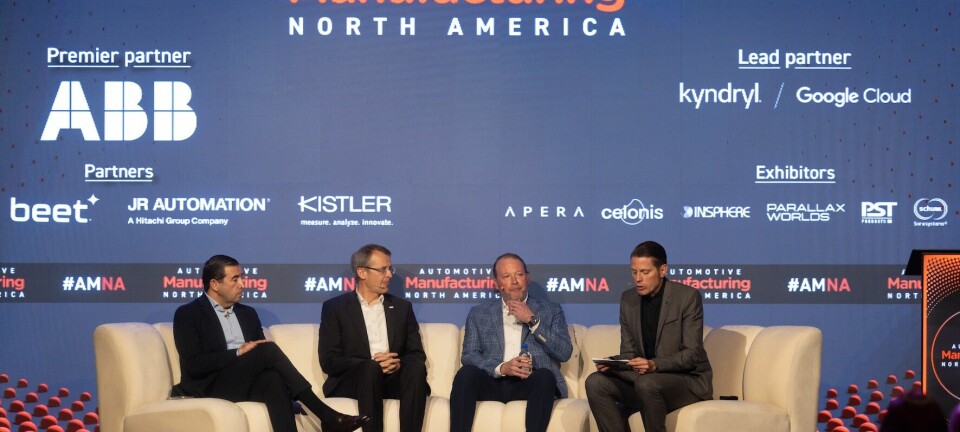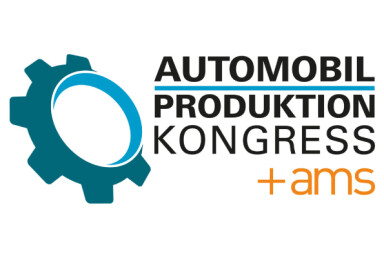AI redefining automation
How AI will redefine robotic automation in manufacturing

General Motors automation leader Dr. Miguel Saez explains how AI driven learning, digital twins, and new training methods can cut robot programming time, close technology gaps, and build a smarter, more resilient manufacturing ecosystem.
Modern manufacturing is now operating in a fast-changing environment where the need for flexibility has become more than just a competitive advantage – it's a survival strategy. Dr. Miguel Saez, Senior Manager for Global Automation Architecture Solutions and Standards at General Motors, offers key insights into how artificial intelligence can fundamentally reshape robotic automation.
We are still trying to figure out as an industry what's the right mix between EVs, hybrids, ICE vehicles
The complex manufacturing ecosystem
Manufacturers face a complex web of challenges that demand high levels of adaptability. Socioeconomic changes impact industries, creating a constant pressure to reimagine production capabilities. In the automotive sector, this complexity is particularly acute, with manufacturers grappling with a dynamic powertrain landscape.
The traditional certainties of vehicle manufacturing have dissolved. Manufacturers now must simultaneously develop and optimise production lines for electric vehicles, hybrid technologies, and traditional combustion engines. This isn't just a technological challenge – it's a strategic imperative that requires unprecedented manufacturing flexibility.
Policy changes and international tariff landscapes add another layer of complexity. A manufacturing plant designed today must be capable of rapid reconfiguration, able to pivot quickly in response to geopolitical shifts and emerging market demands.

The limitations of current robotic automation
Despite significant technological advances, current robotic automation systems have inherent limitations. Programming an industrial robot is an incredibly intricate and time-consuming process. At General Motors, Saez has observed that creating a single robot program can consume over 100 hours of specialised engineering time.
These lengthy development cycles create substantial barriers, particularly for small and medium-sized manufacturers who lack the resources of large automotive companies. The complexity and cost of robotic integration have effectively created a technological divide in manufacturing.
Evolving manufacturing intelligence
The development and adoption of artificial intelligence in manufacturing is a nuanced process of continuous evolution. Saez traces this progression, noting how our understanding of AI has shifted from broad machine learning concepts to narrow generative applications, and now towards a more comprehensive vision of intelligence. "We started first with a very broad concept of AI where any sort of machine learning and genetic algorithms we would call AI," he explains. "Then we came back to a very narrow concept of AI which is just thinking about generative AI, to now going back to a broad concept of AI where we're using reinforcement learning to create intelligence."
This philosophical approach underpins a fundamental challenge; creating AI agents that truly understand manufacturing contexts. Current AI models are trained on vast datasets from sources like Reddit and books, but they lack the specialised knowledge required for complex manufacturing environments.
The challenge of contextual understanding
The automotive industry exemplifies the complexity of modern manufacturing. Manufacturers must simultaneously navigate rapidly changing technologies, from electric and hybrid vehicles to traditional combustion engines, while responding to dynamic socioeconomic shifts and policy changes. "We are still trying to figure out as an industry what's the right mix between EVs, hybrids, ICE vehicles," Saez observes, highlighting the unprecedented challenges facing modern manufacturers.
These challenges demand a radical rethinking of automation. Traditional robotic programming is incredibly time-intensive, with Saez noting that "it takes hours, probably 100 plus hours to create a program, touch up, do the simulation, touch it up." This complexity creates significant barriers, especially for smaller manufacturers.
This isn't just about speed – it's about developing a nuanced understanding of manufacturing quality. The AI learns to distinguish between acceptable and exceptional performance, much like an experienced human engineer, but with the ability to process exponentially more data.
Creating manufacturing intelligence: a sophisticated approach The solution lies in developing AI that can genuinely learn and adapt. Saez proposes a transformative framework centred on teaching AI specific manufacturing skills. The goal is to create systems that can:
- Understand fundamental manufacturing processes
- Break down complex tasks into teachable components
- Autonomously generate optimal operational paths
"The first thing is teaching AI manufacturing skills," Saez emphasises. This means creating AI agents that can comprehend robotics at a fundamental level, understanding how to perform tasks like welding, fastening, and precision placement.
Leveraging digital twins
Central to this approach is the concept of the digital twin – using a sophisticated virtual environment to serve as a learning laboratory for AI systems. These digital replicas allow for wide ranging experimentation, enabling AI to test thousands of iterations overnight, leverage cloud computing and explore different operational configurations.
"How do we create an environment that is so light that I can run hundreds or thousands of different iterations in a matter of seconds," Saez explains, highlighting the transformative potential of this approach.
"We need to start telling the AI agents this is what manufacturing is, this is what success looks like, this is what a good weld looks like,
Innovative learning methodologies
The training approaches are as innovative as the technology itself. Saez describes methods like kinesthetic demonstration, where human experts physically guide robots through complex movements, allowing AI to learn through direct experience. Virtual experimentation provides another powerful training ground, creating environments where robots can experiment, fail, and learn without high physical prototyping costs.
"We need to start telling the AI agents this is what manufacturing is, this is what success looks like, this is what a good weld looks like," Saez explains, highlighting the importance of explicit knowledge transfer.
The ultimate vision: a comprehensive skills library
The most ambitious aspect of Saez's vision is creating a universal library of manufacturing skills. This wouldn't be limited to specific robot brands or manufacturing sites but represent a transferable manufacturing intelligence that could be deployed across different environments.
The goal is to develop a system that can perform complex tasks like welding, fastening, dispensing, and visual inspection with high levels of flexibility and precision.
Strategic implementation and partnerships
Successful implementation requires a holistic approach and Saez emphasises the importance of charting a clear technological vision, avoiding compromises and building strategic partnerships across industries. This includes collaboration with integrators, solution providers, academic institutions, and both private and public organisations.
"Everyone's journey is going to be a little bit different," Saez notes. "But it's important to chart the course. And once you identify a vision for how to use AI in robotics, it's important to not compromise."
A new manufacturing paradigm
Dr. Saez's vision represents more than technological innovation – it's a fundamental reimagining of manufacturing itself. By creating intelligent, adaptive systems that can learn, optimize, and evolve, manufacturers can build truly resilient operations that can respond as dynamically as the markets they serve.
The future of manufacturing is not about rigid automation, but about creating intelligent ecosystems that can learn, adapt, and transform in real-time.







